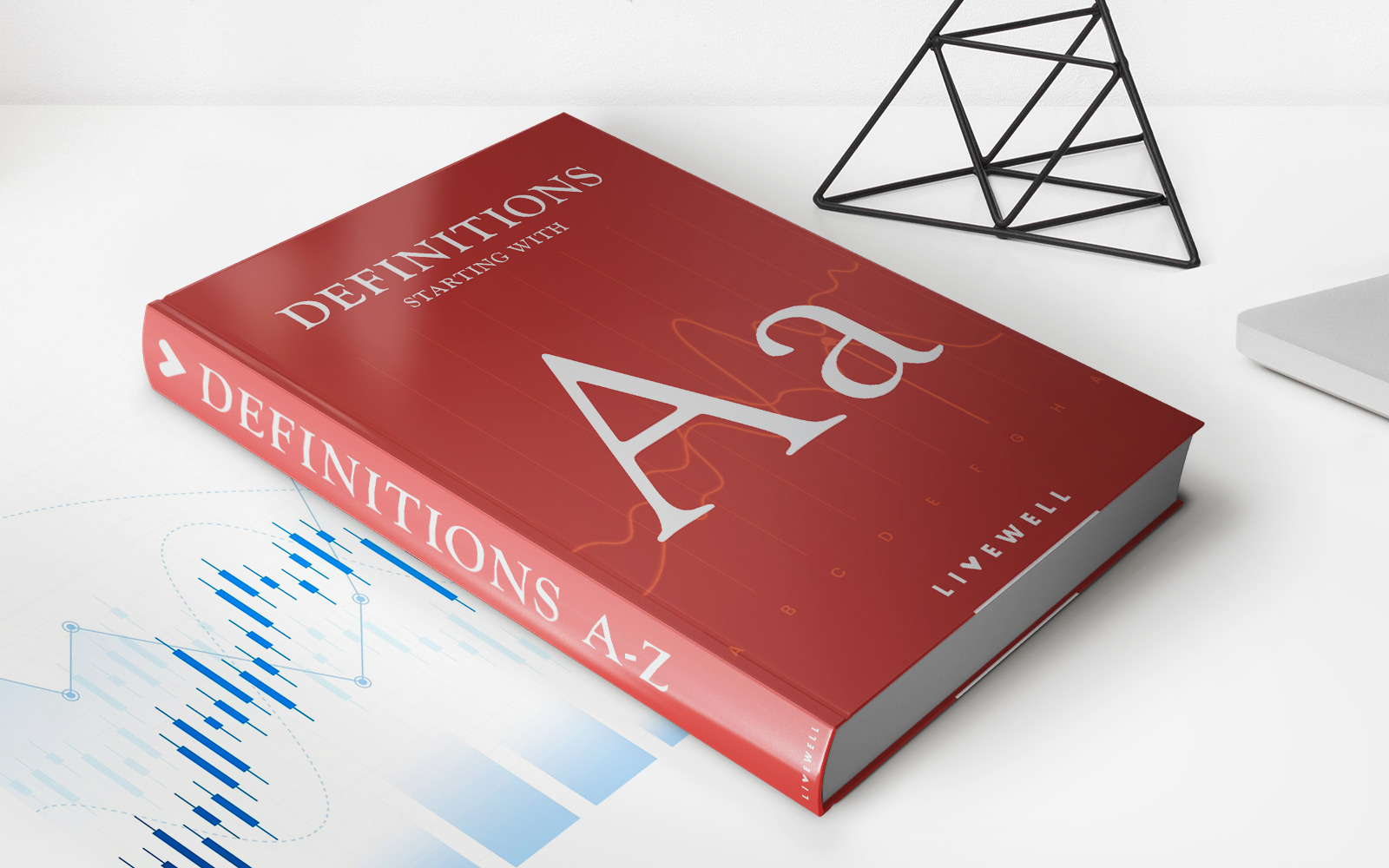

Finance
What Is A Standby Letter Of Credit?
Modified: February 21, 2024
Learn how standby letters of credit work in finance and how they can provide security for financial transactions. Gain a clear understanding of the benefits and uses of this important financial instrument.
(Many of the links in this article redirect to a specific reviewed product. Your purchase of these products through affiliate links helps to generate commission for LiveWell, at no extra cost. Learn more)
Table of Contents
- Introduction
- Definition of Standby Letter of Credit
- Purpose of Standby Letter of Credit
- How Standby Letter of Credit Works
- Types of Standby Letter of Credit
- Advantages of Using Standby Letter of Credit
- Disadvantages of Using Standby Letter of Credit
- Standby Letter of Credit vs. Letter of Credit
- Application and Use Cases of Standby Letter of Credit
- Importance of Standby Letter of Credit in International Trade
- Considerations and Risks Associated with Standby Letter of Credit
- Conclusion
Introduction
Welcome to the world of finance, where complex transactions and instruments play a crucial role in facilitating global trade. One such instrument that holds immense significance is the Standby Letter of Credit. Whether you are an entrepreneur venturing into international trade or a seasoned professional in the financial industry, understanding the concept and functionality of standby letters of credit is crucial for your success. In this article, we will explore what a standby letter of credit is, its purpose, how it works, its types, advantages and disadvantages, and its importance in international trade.
A standby letter of credit, often referred to as SBLC, is a financial guarantee issued by a bank or financial institution. It is a commitment by the issuing bank to make payment to the beneficiary (usually a seller or supplier) in the event that the applicant (buyer or customer) fails to fulfill their contractual obligations. In simpler terms, it serves as a safety net, ensuring that the beneficiary will receive payment if the applicant is unable to meet their financial obligations.
The primary purpose of a standby letter of credit is to provide reassurance and security to the beneficiary. By having this financial guarantee in place, the beneficiary can be confident that they will receive payment, even if the applicant defaults or encounters financial difficulties. Furthermore, standby letters of credit are commonly used in international trade transactions to mitigate risks associated with cross-border transactions and unfamiliar business environments.
Now that we have established the importance and purpose of standby letters of credit, let’s delve into how they work.
Definition of Standby Letter of Credit
A standby letter of credit (SBLC) is a financial instrument issued by a bank or financial institution that guarantees payment to a beneficiary in the event that the applicant fails to fulfill their contractual obligations. It is a form of credit enhancement that provides assurance to the beneficiary that they will be compensated if the applicant is unable to meet their financial commitments.
Unlike a traditional letter of credit, which is primarily used for the facilitation of trade transactions, a standby letter of credit is not meant to be drawn on unless specific conditions are met, such as non-payment or non-performance by the applicant. It serves as a secondary form of payment, acting as a safety net in case of default or other breaches of contract.
A standby letter of credit is a legally binding agreement between the issuing bank, the applicant, and the beneficiary. It outlines the terms and conditions under which the bank will make payment to the beneficiary, in accordance with the underlying contract between the applicant and the beneficiary.
Standby letters of credit are governed by the International Chamber of Commerce’s Uniform Customs and Practice for Documentary Credits (UCP 600), which sets forth internationally recognized rules and guidelines for the issuance and utilization of letters of credit.
It’s important to note that standby letters of credit are not typically used for the purchase of goods or services directly. Instead, they serve as a financial guarantee to ensure that the beneficiary will be compensated if the applicant fails to fulfill their obligations. This provides a level of security and confidence for the beneficiary, reducing their risk in the transaction.
In summary, a standby letter of credit is a financial instrument that acts as a guarantee, promising payment to a beneficiary if the applicant fails to meet their contractual obligations. It provides assurance to the beneficiary and enhances their confidence in conducting business with the applicant.
Purpose of Standby Letter of Credit
The purpose of a standby letter of credit (SBLC) is to provide assurance and security to the beneficiary in a business transaction. It serves as a financial guarantee, ensuring that the beneficiary will receive payment if the applicant fails to fulfill their contractual obligations. Let’s explore the key purposes and benefits of utilizing standby letters of credit:
- Payment Security: One of the primary purposes of standby letters of credit is to provide payment security to the beneficiary. By having this financial instrument in place, the beneficiary can be confident that they will receive payment, even if the applicant defaults on their obligations. This enhances trust and reduces the risk of non-payment for the beneficiary.
- Risk Mitigation: Standby letters of credit play a crucial role in mitigating risks associated with business transactions, especially in international trade. They provide a mechanism to protect the interests of both the buyer and seller by ensuring that financial obligations are fulfilled. This reduces the risk of financial loss and increases confidence in engaging in business transactions.
- Trade Facilitation: Standby letters of credit facilitate international trade by providing a guarantee of payment to the beneficiary. In cross-border transactions, where parties may not have prior experience or established trust, having an SBLC in place can help overcome barriers and build confidence between the buyer and seller. This encourages trade and ensures smoother transaction processes.
- Contractual Compliance: Standby letters of credit ensure that contractual obligations are met by the applicant. By having a financial guarantee in place, it encourages the applicant to fulfill their responsibilities, knowing that their failure to do so will result in payment being made to the beneficiary from the issuing bank. This promotes accountability and adherence to agreed-upon terms.
- Funding Assurance: For certain business projects or ventures, there may be a need for external financing. In such cases, standby letters of credit can be used as collateral to secure financing from financial institutions. This provides assurance to lenders that they will be repaid, as the SBLC can be drawn upon in case of default by the borrower.
In summary, the purpose of a standby letter of credit is to provide payment security, mitigate risks, facilitate trade, ensure contractual compliance, and offer funding assurance. It acts as a powerful tool for both buyers and sellers, instilling confidence in business transactions and promoting smooth and secure financial interactions.
How Standby Letter of Credit Works
To understand how a standby letter of credit (SBLC) works, let’s break down the process into the following steps:
- Initiation: The applicant (buyer or customer) initiates the request for an SBLC from their bank or financial institution. This involves providing the necessary documents and information, such as the underlying contract or agreement, the beneficiary’s details, and any specific conditions or requirements.
- Application and Approval: The bank reviews the application and assesses the creditworthiness of the applicant. If approved, the bank issues the SBLC in favor of the beneficiary (seller or supplier). The terms and conditions of the SBLC, including the maximum amount, expiry date, and any specific requirements, are outlined in the document.
- Delivery to Beneficiary: The bank delivers the SBLC to the beneficiary, usually through a secure electronic system or physical delivery. The beneficiary verifies the authenticity and validity of the SBLC before accepting it.
- Activation of SBLC: The SBLC remains inactive or dormant until the specified conditions are met. These conditions are typically outlined in the underlying contract between the applicant and the beneficiary. In case of non-payment or non-performance by the applicant, the beneficiary can activate the SBLC by submitting the required documentation to the bank.
- Presentation of Documents: Upon activation of the SBLC, the beneficiary submits the necessary documents outlined in the SBLC, such as invoices, shipping documents, or proof of non-performance. These documents must conform to the terms and conditions specified in the SBLC, and they serve as evidence of the applicant’s default or breach of contract.
- Examination and Payment: The bank examines the presented documents and verifies their compliance with the terms of the SBLC. If the documents are in order, the bank makes payment to the beneficiary based on the agreed-upon terms. This payment serves as compensation for the loss or non-payment incurred by the beneficiary.
- Repayment or Resolution: The bank, having made payment to the beneficiary, then looks to the applicant for repayment. The applicant is required to reimburse the bank for the amount paid under the SBLC, along with any associated fees or charges. Alternatively, the applicant and beneficiary may resolve any disputes or issues arising from the transaction.
In summary, the process of how a standby letter of credit works involves the initiation and approval of the SBLC, its delivery to the beneficiary, activation upon specific conditions, presentation of documents, examination and payment by the bank, and eventual repayment or resolution between the applicant and the bank. The SBLC acts as a financial safety net, ensuring that the beneficiary receives payment if the applicant fails to meet their obligations. It provides security and confidence in business transactions, particularly in international trade scenarios where risks and uncertainties are present.
Types of Standby Letter of Credit
Standby letters of credit (SBLCs) can be categorized into different types based on their specific purpose and nature. Let’s explore some of the common types of standby letters of credit:
- Performance Standby Letter of Credit: This type of SBLC is utilized to ensure that the applicant fulfills their performance obligations as per a contractual agreement. It guarantees that the applicant will meet specified milestones, deliver goods or services as agreed, or complete a project. If the applicant fails to meet these obligations, the beneficiary can draw on the SBLC.
- Payment Standby Letter of Credit: A payment SBLC acts as a guarantee of payment to the beneficiary if the applicant fails to make the agreed-upon payment on time. It ensures that the beneficiary receives compensation for non-payment or delays in payment by activating the SBLC to receive the funds.
- Bid Bond Standby Letter of Credit: This type of SBLC is commonly used in bidding processes, particularly in construction or infrastructure projects. It provides assurance to the party requesting bids that, if a successful bidder fails to enter into a contract or provide the necessary performance bond, the beneficiary will be compensated for any loss incurred.
- Financial Standby Letter of Credit: Financial SBLCs are often employed to support financial obligations, such as securing loans or credit facilities. In this scenario, the SBLC serves as collateral for the financier. If the borrower defaults, the beneficiary can draw on the SBLC as repayment.
- Advance Payment Standby Letter of Credit: This type of SBLC is used when the beneficiary requests an advance payment from the applicant. The standby letter of credit acts as a form of security, ensuring that the beneficiary will return the advance payment if they fail to fulfill their obligations or meet certain conditions specified in the agreement.
It’s important to note that these are just a few examples of standby letter of credit types, and each type can be further tailored to meet specific requirements within a given transaction. The choice of SBLC type depends on the nature of the underlying contract and the risks involved. It is recommended that parties involved consult with their financial advisors or legal experts to determine the most appropriate type of standby letter of credit for their specific needs.
In summary, standby letters of credit can be classified into various types, including performance, payment, bid bond, financial, and advance payment SBLCs. Each type serves a specific purpose in providing security, payment guarantee, or contractual compliance. Understanding the different types can help the parties involved in a transaction select the most suitable SBLC to meet their specific requirements and mitigate risks effectively.
Advantages of Using Standby Letter of Credit
Standby letters of credit (SBLCs) offer several advantages to both the applicant and the beneficiary in a business transaction. Let’s explore some of the key advantages of utilizing standby letters of credit:
- Payment Security: One of the primary advantages of using an SBLC is the assurance of payment security it provides. For the beneficiary, the SBLC serves as a financial guarantee, ensuring that they will receive payment even if the applicant fails to fulfill their obligations. This eliminates the risk of non-payment or delays in payment, providing peace of mind in the transaction.
- Risk Mitigation: SBLCs mitigate risks associated with business transactions, especially in international trade. They provide a mechanism to protect the interests of both the applicant and the beneficiary by ensuring the fulfillment of financial obligations. This reduces the risk of defaults, non-performance, and other breaches of contract, promoting a smoother and more secure transaction process.
- Greater Confidence and Trust: Standby letters of credit enhance trust and confidence between the parties involved in a transaction. With an SBLC in place, the beneficiary can have greater confidence in conducting business with the applicant, especially in cases where trust may be lacking or in unfamiliar business environments. The presence of the SBLC acts as a strong commitment from the issuing bank, fostering a more secure and trustworthy relationship between the parties.
- Flexibility: When compared to other forms of financial guarantees, SBLCs offer flexibility in terms of their usage. They can be tailored to suit the specific needs of different transactions and can be customized to include specific conditions or requirements. This adaptability makes standby letters of credit a versatile tool that can be utilized across various industries and business scenarios.
- Preservation of Cash Flow: Utilizing an SBLC allows the applicant to preserve their cash flow and maintain liquidity. Instead of making upfront payments or advanced deposits, the applicant can provide the standby letter of credit as a form of security. This preserves their working capital and allows them to allocate funds to other critical areas of the business.
In summary, standby letters of credit offer advantages such as payment security, risk mitigation, enhanced confidence and trust, flexibility, and preservation of cash flow. By utilizing an SBLC, both the applicant and the beneficiary can navigate business transactions with reduced risks, increased financial security, and a higher level of trust. It is important for parties involved to carefully consider these advantages while assessing the feasibility of using standby letters of credit in their specific business scenarios.
Disadvantages of Using Standby Letter of Credit
While standby letters of credit (SBLCs) offer various advantages, it is important to consider the potential disadvantages associated with their use. Let’s explore some of the key disadvantages of utilizing standby letters of credit:
- Fees and Costs: One of the main disadvantages of using SBLCs is the cost involved. Issuing an SBLC entails fees and charges that are borne by the applicant. There are costs associated with the initial issuance, amendment or extension of the SBLC, and potential charges for examining and processing documents during a claim. These costs can add up and affect the overall financial feasibility of using SBLCs.
- Complexity and Documentation: The process of issuing and complying with SBLCs can be complex and involves a significant amount of paperwork. Both the applicant and the issuing bank need to ensure that all documents, terms, and conditions are accurately prepared and reviewed. The complexity of complying with the requirements can be time-consuming and burdensome, particularly for parties without prior experience in dealing with standby letters of credit.
- Potential for Disputes: Disputes may arise between the applicant, the beneficiary, and the issuing bank regarding the interpretation of the terms and conditions of the SBLC. This can lead to delays in the payment process and potential legal proceedings. Resolving disputes related to SBLCs can be costly, time-consuming, and can strain business relationships between the parties involved.
- Reliance on the Issuing Bank: The effectiveness of an SBLC depends on the financial strength and credibility of the issuing bank. The beneficiary must have trust in the issuing bank’s ability to honor the SBLC and pay in the event of default by the applicant. In some cases, the beneficiary may face difficulties in recovering the payment if the issuing bank becomes insolvent or faces financial challenges.
- Draw Restrictions: Standby letters of credit have specific conditions that must be met before the beneficiary can draw on the SBLC. If the conditions are not precisely satisfied or documented, the beneficiary may face challenges when presenting documents to the issuing bank. The strict adherence to the terms and conditions can limit the flexibility and efficiency of utilizing SBLCs in some cases..
It is important for parties involved in a business transaction to carefully consider these potential disadvantages when deciding to utilize standby letters of credit. Assessing the costs, complexity, potential for disputes, reliance on the issuing bank, and draw restrictions is crucial in determining the suitability and feasibility of using SBLCs in a specific business context.
In summary, while standby letters of credit offer advantages, there are also potential disadvantages such as fees and costs, complexity and documentation requirements, potential for disputes, reliance on the issuing bank, and draw restrictions. It is necessary for parties to weigh these factors against the benefits before deciding to use standby letters of credit as a financial instrument.
Standby Letter of Credit vs. Letter of Credit
Standby letters of credit (SBLCs) and letters of credit (LCs) are both financial instruments used in international trade to provide payment assurance to beneficiaries. While they share some similarities, there are key differences between the two. Let’s compare standby letters of credit and letters of credit:
Definition: A standby letter of credit is a guarantee issued by a bank to ensure payment to the beneficiary if the applicant fails to meet their obligations. It acts as a secondary payment method. On the other hand, a letter of credit, often referred to as a documentary credit, is a payment guarantee issued by a bank on behalf of the buyer to the seller, ensuring payment upon fulfillment of specified conditions.
Usage: Standby letters of credit are commonly used as a form of backup payment in case of non-performance or non-payment by the applicant. They act as a financial safety net. Letters of credit, on the other hand, are predominantly used as a primary payment method in international trade transactions. They provide assurance to the seller that they will receive payment upon meeting specified conditions, such as presenting the necessary documents.
Activation: Standby letters of credit are typically activated when the applicant fails to meet their obligations, such as non-payment or non-performance. The beneficiary can then make a claim on the SBLC for payment. In contrast, letters of credit are activated when the seller fulfills the specified conditions, such as providing the required shipping documents or meeting quality standards.
Payment Method: Standby letters of credit act as a secondary form of payment, providing reimbursement to the beneficiary in case of default or non-performance by the applicant. In contrast, letters of credit act as the primary method of payment, with the issuing bank making a direct payment to the seller upon the fulfillment of the specified conditions.
Documentary Requirements: Standby letters of credit typically require the beneficiary to submit specific documents outlining the applicant’s breach of contract or non-payment. These documents serve as evidence for the bank to process payment. Letters of credit, on the other hand, require the seller to present specific documents, such as invoices, certificates of origin, or bill of lading, to receive payment from the issuing bank.
In summary, while standby letters of credit and letters of credit share the common goal of providing payment assurance, they differ in their usage, activation process, payment method, and documentary requirements. Standby letters of credit act as a backup form of payment, activated when the applicant fails to meet their obligations, whereas letters of credit are the primary payment method in international trade transactions, activated upon fulfilling specified conditions. Understanding these distinctions is crucial in determining the most suitable instrument for a particular business transaction.
Application and Use Cases of Standby Letter of Credit
Standby letters of credit (SBLCs) have a wide range of applications and use cases in various industries. Let’s explore some of the common scenarios where standby letters of credit are utilized:
- International Trade: SBLCs play a significant role in mitigating risks in international trade transactions. They provide payment assurance to both buyers and sellers, especially when dealing with unfamiliar trading partners, new markets, or countries with uncertain economic or political situations. Standby letters of credit ensure that the seller will be paid if the buyer fails to fulfill their financial obligations as per the agreed contract.
- Construction and Infrastructure Projects: Standby letters of credit are frequently used in construction and infrastructure projects. Contractors may be required to provide SBLCs as bid bonds or performance guarantees to secure contracts or ensure the timely completion of projects. This provides assurance to project owners that the contractor will fulfill their obligations or compensate for any breach of contract.
- Real Estate Transactions: In real estate transactions, SBLCs can be used as a form of security deposit or performance guarantee. For example, a buyer may provide a standby letter of credit to the seller to demonstrate their commitment and financial capacity to complete the purchase. If the buyer fails to complete the transaction, the seller can draw on the SBLC as compensation.
- Banking and Financing: Standby letters of credit can be utilized in various banking and financing scenarios. Financial institutions may require SBLCs as collateral for loans or lines of credit, providing assurance to lenders that they will be repaid if the borrower defaults. Additionally, SBLCs can be used to secure advance payment or facilitate trade financing arrangements.
- Government and Public Sector Contracts: SBLCs are commonly used in government and public sector contracts as a form of security. Contractors bidding for government projects may be required to submit standby letters of credit to demonstrate their financial capability to complete the project. These SBLCs act as bid bonds or performance guarantees, protecting the interests of the government entity.
- International Licensing and Franchising: Standby letters of credit are employed in licensing and franchising agreements to protect the rights of the licensors or franchisors. The licensor or franchisor may require the licensee or franchisee to provide an SBLC as a guarantee, ensuring compliance with the terms and conditions of the agreement and payment of royalties or fees.
These are just a few examples of the application and use cases of standby letters of credit. The versatility and flexibility of SBLCs make them applicable in a wide range of industries and business scenarios. It is important for parties involved to assess their specific transaction requirements and consult with their financial advisors or legal experts to determine the suitability and effectiveness of utilizing standby letters of credit.
In summary, standby letters of credit find application in international trade, construction projects, real estate transactions, banking and financing, government contracts, licensing and franchising agreements, and many other areas. Their purpose is to provide financial security, payment assurance, and risk mitigation, allowing for smoother and more reliable business transactions.
Importance of Standby Letter of Credit in International Trade
Standby letters of credit (SBLCs) play a crucial role in international trade, providing a range of benefits and serving as an essential tool for conducting business across borders. Let’s explore the importance of standby letters of credit in international trade:
Payment Security: In international trade, payment security is paramount. SBLCs offer a reliable and trusted mechanism to ensure that sellers receive payment for their goods or services, even in complex cross-border transactions. The financial guarantee provided by an SBLC helps mitigate the risk of non-payment or delays caused by various factors such as currency fluctuations, political instability, or unfamiliar business environments.
Risk Mitigation: International trade involves inherent risks such as non-performance, breach of contract, or change in market conditions. SBLCs serve as a risk mitigation tool for both buyers and sellers. For sellers, the SBLC offers certainty of payment if the buyer fails to fulfill their financial obligations. For buyers, the SBLC provides assurance that payment will only be made upon the satisfactory receipt of goods or services, ensuring that their interests are protected.
Building Trust and Confidence: International trade often involves parties from different countries and cultural backgrounds, which can create challenges in establishing trust. The presence of an SBLC increases trust and confidence between the buyer and seller. The seller is reassured that payment will be made, while the buyer has confidence that their payment will only be released upon the fulfillment of agreed-upon terms and conditions.
Facilitating Financing: The presence of an SBLC can help secure financing from banks or financial institutions, especially in cases where collateral is required. The SBLC can be used as collateral to obtain favorable lending terms, reduce interest rates, or access additional working capital. This financing support enables businesses to grow and expand their international trade activities.
Mitigating Legal and Political Risks: International trade is subject to various legal and political risks, including changes in regulations, policy shifts, or disputes between trading nations. SBLCs provide a buffer against these risks by ensuring that payment is protected. In case of disputes, the terms of the SBLC can be enforced, alleviating concerns about potential financial losses.
Enabling Cross-Border Trade: SBLCs facilitate cross-border trade by providing a recognized international payment mechanism. They offer a level of certainty and standardization that encourages businesses to engage in global transactions. Moreover, SBLCs comply with international rules and conventions, such as the International Chamber of Commerce’s Uniform Customs and Practice for Documentary Credits (UCP 600), ensuring uniformity and clarity in trade practices.
In summary, standby letters of credit are of vital importance in international trade. They provide payment security, mitigate risks, build trust and confidence, facilitate financing, safeguard against legal and political risks, and enable cross-border trade. By utilizing SBLCs, businesses can navigate the complexities of international trade with greater assurance, allowing for smoother transactions and fostering global economic growth.
Considerations and Risks Associated with Standby Letter of Credit
While standby letters of credit (SBLCs) offer benefits and payment security, it is important to consider certain considerations and risks associated with their use. Let’s explore these factors:
Creditworthiness of the Issuing Bank: The reputation and creditworthiness of the issuing bank is a crucial consideration when using an SBLC. The beneficiary should assess the financial stability and reliability of the issuing bank to ensure that payment will be made in the event of default by the applicant. Conducting due diligence and seeking references or ratings of the issuing bank can help mitigate this risk.
Fees and Costs: SBLCs involve fees and costs, including issuance fees, confirmation fees (if applicable), amendment fees, and examination fees. These expenses can impact the overall cost of the transaction and should be carefully considered. Additionally, the beneficiary should be aware of any reimbursement or collection fees associated with the SBLC, as these could reduce the actual amount received.
Documentary Compliance: Strict adherence to the terms and conditions of the SBLC is crucial to avoid complications. The beneficiary must ensure that all required documents are presented accurately and meet the specified criteria. Failure to comply with these requirements may result in delays, disputes, or even the rejection of payment. Proper understanding and alignment with the terms of the SBLC are essential to mitigate this risk.
Dispute Resolution: Disputes may arise between the parties involved in an SBLC transaction. Disagreements over the interpretation of terms, discrepancies in documents, or conflicts of interest can lead to delays in payment or legal proceedings. It is advisable to include clear dispute resolution mechanisms in the underlying contract and SBLC to facilitate prompt and fair resolution.
Expiry and Extension: The expiry date of the SBLC is an important consideration. The beneficiary should be aware of the expiration date and initiate the claim process in a timely manner if required. If an extension is necessary, it should be communicated and agreed upon well in advance to avoid gaps in payment protection. Failure to address the expiry or extension of the SBLC may result in the loss of payment security.
Fraud and Documentation Risks: While SBLCs are designed to mitigate risks, fraudulent practices can occur. Parties involved should exercise caution and conduct proper due diligence to ensure the authenticity of the SBLC and the parties involved. The possibility of forged or counterfeit documents should also be considered, necessitating the implementation of robust document verification processes.
Regulatory and Legal Compliance: Compliance with applicable laws, regulations, and international trade guidelines is crucial in using SBLCs. Failure to comply with legal requirements in the issuance, presentation, or utilization of the SBLC can lead to delays, penalties, or even legal repercussions. Engaging legal advisors and experts in international trade can help ensure compliance and mitigate associated risks.
In summary, considerations and risks associated with standby letters of credit include assessing the creditworthiness of the issuing bank, understanding and managing the associated fees and costs, complying with stringent documentary requirements, preparing for potential disputes, addressing expiry and extension issues, mitigating fraud and documentation risks, and complying with regulatory and legal requirements. By carefully assessing and managing these factors, parties can effectively utilize SBLCs while minimizing potential risks and maximizing the benefits of this financial instrument.
Conclusion
Standby letters of credit (SBLCs) are essential financial instruments in the world of international trade and business transactions. They provide payment security, mitigate risks, and build trust between parties involved. Understanding the definition, purpose, and functioning of standby letters of credit is crucial for businesses seeking to engage in cross-border trade and transactions.
Throughout this article, we have explored the definition of standby letters of credit, their purpose, how they work, the different types available, and the advantages and disadvantages associated with their use. We have also discussed their importance in international trade, facilitating secure and reliable transactions while reducing financial risks.
Standby letters of credit offer parties involved in trade transactions reassurance and confidence by ensuring payment security, mitigating risks, and providing a reliable mechanism for cross-border trade. They are particularly valuable in scenarios where trust, uncertainty, and varying legal and financial systems are involved.
However, it is important to recognize the considerations and risks associated with using SBLCs, such as the creditworthiness of the issuing bank, fees and costs, documentary compliance, dispute resolution, expiry and extension, fraud and documentation risks, and regulatory and legal compliance.
By carefully weighing the benefits and risks, and with proper understanding and due diligence, parties can utilize standby letters of credit effectively to protect their interests and facilitate successful international trade.
In conclusion, standby letters of credit are a valuable tool in international trade, providing payment security, risk mitigation, and confidence among parties involved. Understanding the complexities, considerations, and risks associated with using SBLCs can help businesses make informed decisions and navigate the global market with greater assurance and success.














